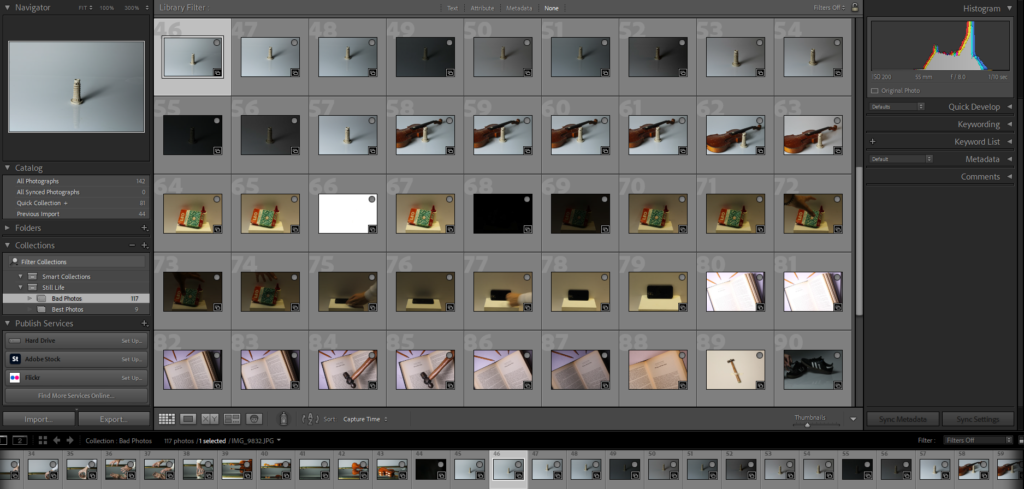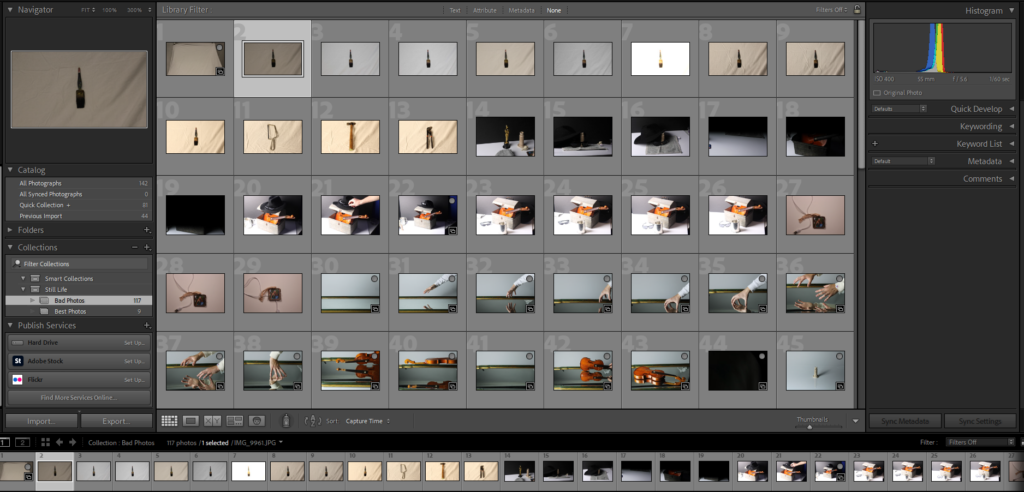These are some of my photos I have taken, a lot of the photos I used a 3D further away look, but for a lot of the other ones I also used the 2D over-head look with capturing all the tools, books and other objects.



Strongest photos:




For these photographs, what I did was use the infinity curve for the objects to go on. I placed the different objects in the centre apart from the shoes which I put the middle of them in the centre. Then turned all the main lights off, but kept a still standing light on with the cool side of it on. Faced it towards my objects and then took the picture.
But for the camera what I did was put the aperture around f/16 which is kind of high because I don’t need to blur the background as it is plain and dark already. A low shutter speed because the object is still, it doesn’t need a high shutter speed. Finally, a high ISO because I wanted it to be fairly dark and that is what gives the gloomy/dark feel especially for the tower.

In this photo this is old objects but gives the viewer a lightened feel with the background having a pinkish tint, and with the texture being very smooth it gives a friendly/young feel.

Try to ensure that your photoshoots are direct responses to your research. For example: for your still life photos, you should be considering grouping of objects to create a still life composition. You can also consider the type of objects you photography, what they communicate to the viewer.
You shouldn’t really be using single object photographs here.
Well done for starting to talk about aperture etc when discussing your photos. Try to use this more often throughout your work. If you are unsure on how to describe something – research it or ask me. For example: instead of referring to your composition as 2D, you should be explaining that it has been taking from a birds eye view to create a direct photograph that allows you to view the object straight on.